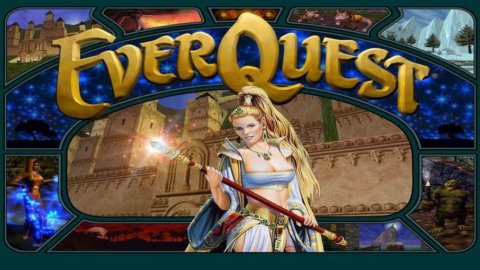The more than five million inhabitants of Kyrgyzstan produce goods and services worth 2,2 billion US dollars each year. The nation of Norrath, which has fewer than 500 inhabitants, has the same GDP. The difference between the two countries, apart from the demographic data, is that while Kyrgyzstan is located in Central Asia, Norrath is an artificial world "inhabited" online by the participants of a role-playing game called EverQuest. Virtual role-playing games or “massively multiplayer online role-playing games” (MMORPGs) are gaining more and more followers, creating an ever-increasing turnover, official and not. Experts also suggest applications outside the entertainment industry and at the level of international financial institutions.
How do they work - EverQuest is one of the first and most popular computer role-playing games. Inspired by traditional role-playing games, such as "Dungeons and Dragons", EverQuest allows participants, through a virtual character, called an "avatar", who represents them on video, to explore the fantastic world of Norrath, fight monsters and various enemies, win challenges and accumulate points and treasures. Players progressively advance in level and, with that, in prestige. EverQuest, invented in 1999, is owned by Sony Online Entertainment, which has produced 18 game expansions, the latest being “Veil of Alaris”, released in 2011. Other RPGs that are very successful among the audience are World of Warcraft, Lord of the Rings Online, Age of Conan, Warhammer Online, Eve Online, Aion or Dark Age of Camelot which all work on the same principle of fight and conquer in a fantasy world.
Company revenue – These games are normally accessed by subscription. For example, subscriptions to World of Warcraft ($15 a month) brought in $2010 billion in 1,36, but there are companies that opt for free access: EverQuest has a free-to-level bronze -play and the new Guild Wars 2 requires only the purchase of the software, equal to 60 dollars per copy. The market is getting bigger and bigger: it is estimated that over 10 million people get involved in virtual worlds with forecasts of over 100 million within a couple of decades. And the average participant is not the high school student or the "nerd": more and more professionals, from medium to medium-high income, are attracted to EverQuest and the like. In 2004, an analysis of the world of online virtual games revealed that the industry produced a total GDP equal to that of Namibia.
The unofficial GDP – According to Edward Castronova, an associate professor of telecommunications at Indiana University, online role-playing games have a profound influence on real-world culture and economics. Castronova, who has studied virtual worlds for years, says that apart from revenue from subscriptions or sales of software and expansions, MMORPGs create additional unofficial value. It is a kind of "black market" where participants buy (often on online auction sites) virtual money, points, equipment and the same avatars offered for sale by other competitors. The practice, often discouraged by patent-owning companies, continues to grow. Numerous EverQuest "avatars" are now sold for $XNUMX per character.
Other applications – In his book, entitled “Synthetic Worlds”, Castronova also sees interesting opportunities for the application of MMORPGs, such as education and social science research. Many American educational institutions are already using virtual worlds in which students engage in algebra, history and geography challenges or speak foreign languages. Castronova also suggests that central banks could use technologies from synthetic worlds to conduct monetary policy experiments.





